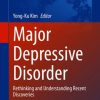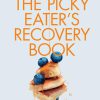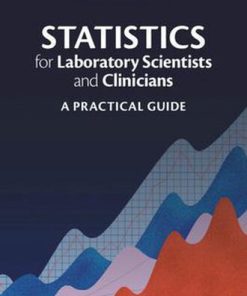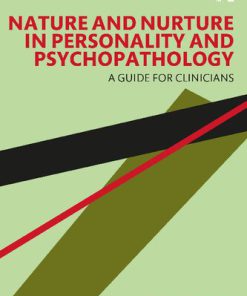Is This Autism 1st Edition by Donna Henderson, Sarah Wayland, Jamell White ISBN 9781000887471 1000887472
$50.00 Original price was: $50.00.$25.00Current price is: $25.00.
Is This Autism? 1st Edition by Donna Henderson, Sarah Wayland, Jamell White- Ebook PDF Instant Download/Delivery: 9781000887471, 1000887472
Instant download Full Chapter of Is This Autism? 1st Edition after payment
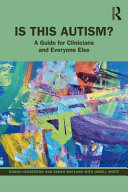
Product details:
ISBN 10: 1000887472
ISBN 13: 9781000887471
Author: Donna Henderson, Sarah Wayland, Jamell White
Though our understanding of autism has greatly expanded, many autistic individuals are still missed or misdiagnosed. This highly accessible book clarifies many ways that autism can present, particularly in people who camouflage to hide their autistic traits.
The authors take the reader step by step through the diagnostic criteria, incorporating the latest research as well as quotes from over 100 autistic contributors that bring that research to life. They also describe many aspects of autism that are not included in the current diagnostic criteria, such as autistic strengths and co-occurring disorders. Readers will learn about highly relevant topics, such as different types of empathy, sensory systems that are not well known, neuro-crash and burn out, and relative versus absolute thinking.
This book provides a deep, current, and neurodiversity-affirmative understanding of the less obvious presentations of autism. It is relevant to all healthcare professionals, educators, family members, autistic individuals, and anyone who is curious about autism. A clinical companion guide, Is This Autism? A Companion Guide for Diagnosing, is available for clinicians who make mental health diagnoses.
Table of contents:
Part One What can autism actually look like?
Chapter 1 Our framework: The current diagnostic criteria
Social and communication challenges
Repetitive and restricted behaviors
Additional Criteria
DSM-5-TR and ICD-11 similarities
DSM-5-TR and ICD-11 differences
References and related reading
Chapter 2 Reciprocity
What people often think difficulty with reciprocity means
What do reciprocal interactions really entail?
So, what might this look like in someone with a less obvious presentation of autism?
From the experts: Reflections on some things that make interactions challenging
What is camouflaging, anyway?
From the experts: Reflections on camouflaging
Reciprocity: What we’ve learned from the girls
Connecting culture
Frequently asked questions
References and related reading
Chapter 3 Nonverbal communication
What people often think difficulty with nonverbal communication means
What does nonverbal communication really entail, and what might this look like in someone with autism?
From the experts: Reflections about body positioning
From the experts: Reflections about eye contact
From the experts: Reflections about volume
From the experts: Reflections about tone of voice
From the experts: Reflections about rate of speech
From the experts: Reflections about our own facial expressions
From the experts: Reflections about gesturing
From the experts: Reflections about context
From the experts: Reflections about reading other people
From the experts: The repercussions of not showing emotions
Nonverbal communication: What we’ve learned from the girls
Connecting culture
Frequently asked questions
References and related reading
Chapter 4 Relationships
What people often think difficulty with relationship management means
What does relationship management really entail?
So, what might relationship management look like in an autistic person?
From the experts: Some things that make relationships challenging
Relationships on the spectrum: What we’ve learned from the girls
Connecting culture
Frequently asked questions
References and related reading
Chapter 5 Repetitive or idiosyncratic behavior
What people often think repetitive or idiosyncratic behavior means
What do repetitive behaviors really include?
From the experts: Common and unique repetitive movements
Examples of repetitive speech and language
From the experts: The many purposes of repetitive behaviors
From the experts: Repercussions when autistics are forced to stop
Repetitive behavior: What we’ve learned from the girls
Frequently asked questions
References and related reading
Chapter 6 Flexibility
What people often think a lack of flexibility means:
What does this category really include?
From the experts: Reflections on areas of inflexibility
From the experts: Reasons for the preference/need for sameness
Inflexibility: What we’ve learned from the girls
Frequently asked questions
References and related reading
Chapter 7 Intense or atypical interests
What people often think a restricted interest means
What does this category really include?
From the experts: Common intense interests
From the experts: How do our interests differ from “non-autistic interests”
Interests: What we’ve learned from the girls
Frequently asked questions
References and related reading
Chapter 8 Sensory differences
What people often think atypical responsivity to sensory input means
What does this criterion really include?
Our sensory systems
So, what might this look like in an autistic person?
From the experts: Reflections about over-responsivity
From the experts: Firm versus light touch
From the experts: Reflections about under-responsivity
From the experts: Reflections about sensory craving
Sensory experiences: What we’ve learned from the girls
Frequently asked questions
Note
References and related reading
Part Two What else might be part of this presentation?
Chapter 9 Common co-occurring challenges
Possible Emotional Conditions1
Anxiety
From the experts: Reflections on anxiety
Obsessive-compulsive disorder (OCD)
Depression
Autistic burnout
From the experts: Reflections on burnout
Emotional intensity and lability
From the experts: Reflections on neuro-crash
From the experts: Reflections on extreme empathy
Trauma
Alexithymia
From an expert: A reflection on alexithymia
Pathological demand avoidance/pervasive drive for autonomy (PDA)
Possible Cognitive Differences
Attention
Executive functioning
High need for explicit context
Spoken language
Academics
Slow processing speed
Prosopagnosia
From an expert: A reflection on prosopagnosia
Giftedness
Medical/health
Common concerns
From an expert: Reflection on a special interest and eating disorders
Neurological challenges
Other health challenges
Other experiences
Adaptive functioning
Driving avoidance
From an expert: Reflection on driving
School avoidance
Gender and attraction
From the experts: Reflections on gender
Note
References and related reading
Chapter 10 Autistic strengths
Sensory differences
From the experts: Reflections about sensory strengths
Cognitive processes
From the experts: Reflections on attention and hyperfocus
From the experts: Reflections on system(at)izing
Analytical thinking
People also search:
autism 1 vs autism 2
is this autism awareness month
autism 1-2
autism 1st grade
this is autism
You may also like…
Medicine
Statistics for Laboratory Scientists and Clinicians A Practical Guide 1st Edition Mcdonnell Sill
Poetry - Canadian Poetry
Romance - Other Romance Categories
This Is Crazy This Is Series Book 1 1st Edition Natasha Madison
Psychology - Neuropsychology
Psychology - Clinical Psychology
Nature and Nurture in Personality and Psychopathology A Guide for Clinicians 1st Edition Joel Paris
Psychology - Psychological Disorders
Fiction - Humour
Who s Who When Everyone is Someone Else First Edition C. D. Rose
Uncategorized
Psychology - Psychological Disorders
Is This Autism?: A Companion Guide for Diagnosing 1st Edition Donna Henderson

